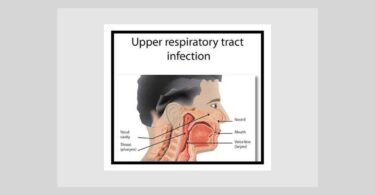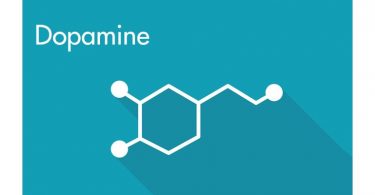Pericarditis
- This is an inflammation of the serous membrane which covers and surrounds the heart, and is reflected in front over the chest wall.
- The chief causes of pericarditis may be enumerated as: rheumatic, traumatic, pleuritic, pulmonic, or as diseases of the ribs, vertebrae, aesophagus, stomach or liver.
- The inflammation may he primary or secondary. It may be circumscribed or general involving the whole pericardium, Acute or chronic. — See hydropericardium.
- The prominent symptoms of an attack are usually a chill or cold feeling at the heart followed by fever with stitch-like pains at the precordial region or radiating from it, tenderness on pressure, precordial anxiety, dyspnea, preventing lying down. There may be nausea and vomiting at times. A short dry cough may be present. There is an expression of anguish on the face that is most distressing in severe cases.
- There are three stages recognized: (1) inflammation; (2) effusion and adhesion and (3) absorption or pressure and death.
- The serious symptoms looked for are from two causes: (1) extension of the inflammation involving the heart muscle and (2) rapid and extensive pericardial effusion and adhesions. In the first instance the heart anguish will be increased with cold- ness of the extremities, heart action tumultuous, insensibility, delirium, sudden death. In the second stage the heart’s action is labored, dyspnea marked, oedema appears, loss of pulse, coma or faintness and death.
- The physical signs are the friction sound, likened to the purring of a cat, and increased action of heart, sometimes intermittent. As the effusion increases the heart sounds become muffled and the area of dullness is increased. In cases of adhesions the action of the heart may be paradoxical.
- The prognosis should be guarded, Death may occur in 30 hours. The heart may be paralyzed by the effusion. Adhesions may form. The disease may become subacute or chronic and continue for weeks and complete resolution eventually take place. The serous membrane is apt to become contracted, roughened and adherent by fibrous bands producing retraction of the ensiform cartilage and ribs. In young persons, this may be very decided.
- The treatment demands prompt and effective measures.
The patient must be quieted and placed in the most comfortable position, and if possible have a trained nurse. The food should be light and nourishing, stimulants are to be avoided, especially in the first stage. The carefully selected remedy should be administered to allay the inflammation and prevent effusion, adhesions, paralysis or complications in remote organs. Even if it is secondary upon some other disease, the pericarditis should receive the first attention.
- Remedies that may be indicated are as follows: If traumatic, Arnica. For the inflammatory outset, Aconite or Vera- trum viride. The anguish of Aconite distinguishes its inflammation from that attending the stupor of Veratrum. For the pain Bryonia or Spigelia. They may be indicated in this order, Bryonia for the first stage and Spigelia for the subsequent myalgia. In these cases there may be met with indications for Belladonna (its flushed face), Arsenicum (dyspnoea on lying down), Digitalis (its weak pulse), Cactus (severe myalgia) or Kali carb (stitching pains). General symptoms may call for Colchicum, Aesculus, Kali iod., Cimicifuga, Kahnia, Squilla. For special indications see Heart Therapeutics
Hydropericardium
- This is an effusion in the pericardium or heart sac, that may occur without active local inflammation. It may be a primary as well as a secondary disease.
- The Symptoms are not prominent unless the amount of fluid is large. Dyspnoea on lying down, general dropsy, feeble heart sounds and increased area of dullness in all directions, especially in a pyramidal shape are diagnostic.
- The treatment calls for great care in the nourishment of the patient. Enjoin rest and remove any exciting cause if possible. Aspirate if the effusion threatens life. The principal remedies that have proven serviceable are Arsenicum, Apis, Apocynum, Hellebore, Lycopodium, Mercurius or Sul- phur. See also Pericarditis and consult general Heart Therapeutics.
Hemopericardium is caused by blood in the pericardial sac from rupture of an aneurism, rupture of the heart, traumatism and cancerous and tuberculous pericarditis. The local signs are the same as in hydropericardium with the general one of rapid prostration and speedy death, as in one of my own cases. In traumatism control the inflammation with Arnica and aspirate if the conditions favor.
Pneumopericardium – Air in the pericardium is a rare condition and results from external wounds, or the perforation of a pyo-pneumothorax into the pericardial sac with the formation of pus. Percussion yields a tympanitic sound, and on auscultation splashing and metallic sounds are detected. An anxious, painful expression with dyspnoea, cyanosis and sudden collapse are the chief and alarming symptoms.
The remedies indicated are Arnica for traumatism, Arsenicum, or Sulphur for formation of pus (see Pericarditis and Hydropericardinm).
Myocarditis
- Myocarditis or carditis is an inflammation of the heart muscle itself. It may be a primary disease as the result of heart strain or rheumatism, but is usually a complication of either pericarditis or severe endocarditis.
- The diagnostic signs given are extreme cardiac anguish and pain. The heart is unusually excited with high fever.
- The Symptoms may appear gradually as after severe exercise. During an attack of peri or endocardial inflammation the carditis may appear as a “second “storm.
- The indications for treatment are to keep the patient quiet and comfortable and select the indicated remedy which may be either a myalgic or inflammatory one, e. g., Arnica, Rhus, Aconite, Bryonia. See Heart Therapeutics as well as Pericarditis and Endocarditis.
Endocarditis
- Endocarditis is an expressive term for inflammation within the heart involving the serous membrane covering the walls, columns and valves.
- It is usually a secondary disease, but may be primary as from cold or traumatism. It is most severe in its results.
- When secondary, it appears as a result of (1) rheumatic, acid irritation of the endocardium and usually of the heart muscle, (2) vitiated state of the blood as from Pyaemia or Bright’s disease.
- The diagnostic symptoms may be few. In fact the invasion may be unnoticed. Usually pain, palpitation of heart, sounds stronger and audible over more space, pulse rapid and small, dyspnaea, delirium, finally icterus may appear. The appearance of a valvular murmur locates the seat of lesion.
- To differentiate inflammation within the heart from that without, note the following points: The endocardial murmur is constant in situation, rhythm and character. Position has no effect, neither does respiration nor pressure change the murmur. Generally more widely diffused. Pericardial friction sound, change of position increases, diminishes or suppresses the friction sound. Pressure increases it. More local.
- In endocarditis we expect serious valvulitis and as a result lesions of one or more sets of valves. Fibrillae from adherent valves may be carried into remote organs and produce thrombosis.
- The sequale of an attack of endocarditis are valvular insufficiency or stenosis and consequent hypertrophy and dilatation.
- The management of an attack of endocarditis involves (1) control of the inflammation and (2) repair of the lesion.
The primary disease must also receive due attention that a subsequent attack may not occur. Prompt action is demanded.
- The remedies that have proven serviceable here are few. Aconite for the initiatory chill and fever (cold). Arnica if traumatic. Bryonia if rheumatic with stitching pains. Then may come Spigelia, Cactus, Digitalis, Lachesis or Lycopus. If the acid or septic cause remains, other remedies may be indicated as Arsenicum. See valvular remedies and Heart Therapeutics.




